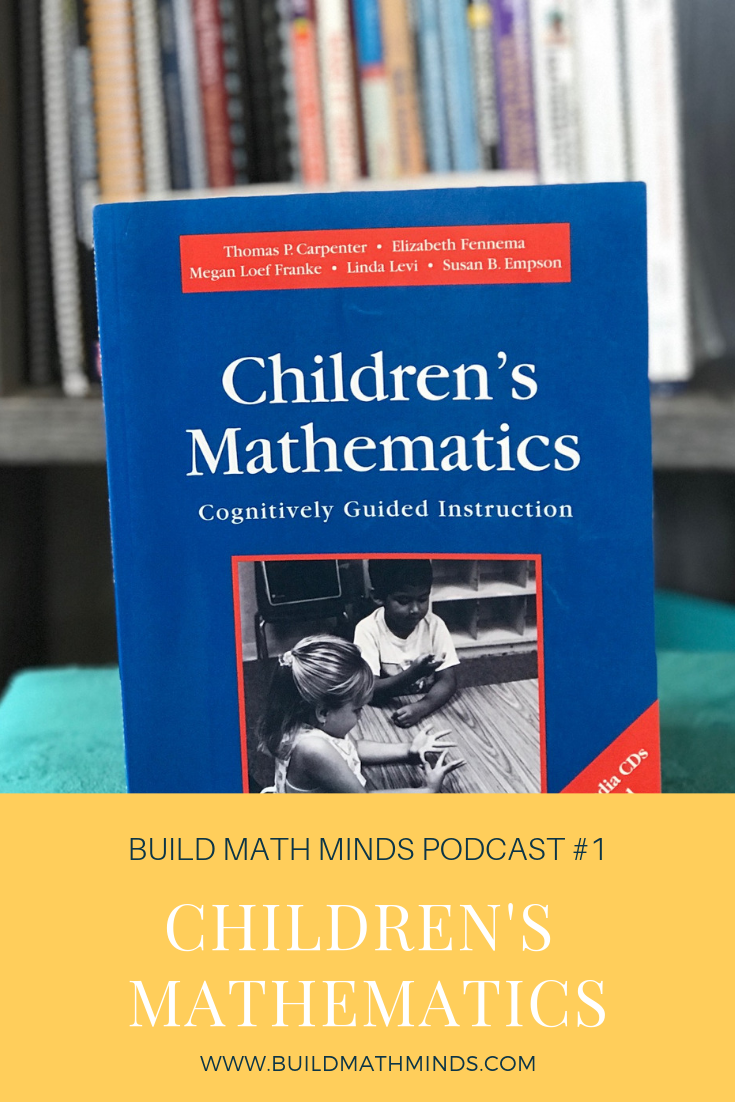Welcome fellow Recovering Traditionalists to Episode 1. Today we are looking at an insight I got from one of the books that forever changed my life, Children’s Mathematics: Cognitively Guided Instruction.
Now this book is full of goodness and you’re probably going to hear multiple podcast episodes about this book. But, the insight I want to share with you today came from one of the last chapters of the book and it’s on page 105 in the original version of this book. There has been a new version that came out but I went to my original version for this episode.
Here is the quote:
““Our research has been cyclic. We started with explicit knowledge about the development of children’s mathematical thinking (Carpenter 1985), which we used as a context to study teachers’ knowledge of students’ mathematical thinking (Carpenter et al. 1988) and the way teachers might use knowledge of students’ thinking in making instructional decisions (Carpenter et al 1989). We found that although teachers had a great deal of intuitive knowledge about children’s mathematical thinking, it was fragmented and, as a consequence, generally did not play an important role in most teachers’ decision making (Carpenter et al. 1988). If teachers were to be expected to plan instruction based on their knowledge of students’ thinking, they needed some coherent basis for making instructional decisions.”
That one hit home for me because I wasn’t using my students thinking to plan instructional decisions. I was using my textbook. I was flipping lesson by lesson just doing the next thing in the book. And cognitively guided instruction is about using your students thinking at the time. Their cognitive abilities at the time to guide your instructional decisions. And this was a tipping point for me. It was the point where I realized I couldn’t rely on my textbook. The textbook was a great resource for me but what truly mattered was not getting through the textbook. What mattered was using the knowledge my students had at the time to guide my instructional decisions to get them to the end goal of a standard.
The end goal should not be getting to the end of your textbook. And the book, Children’s Mathematics: Cognitively Guided Instruction, helped me realize that. It helped me gain more knowledge about students thinking so that I could inform my instructional decisions. That was the hard part for me, was that I was flipping lesson by lesson in the textbook because I didn’t know any better. I did not have and understanding of my students thinking and their natural progression and developing their mathematical thinking. So, I didn’t know what to do next so the textbook was a resource for me. It was not just a resource honestly, it was my bible to go through. It’s like this is what it tells me to do next.
But now, as I’ve gained more knowledge about how students think about their progression and their mathematical thinking, I can use that to guide my instruction. And if you want to dig a bit deeper into learning about how kids develop their mathematical thinking then I highly encourage you to check out the book, Children’s Mathematics: Cognitively Guided Instruction.
Subscribe and Review in iTunes
Hey, are you subscribed to the Build Math Minds Podcast, yet? If you’re not, make sure to do that today because I don’t want you to miss any episodes! Click here to subscribe to the podcast in iTunes.
While you’re there, don’t forget to leave a review on iTunes too. I would love to know your thoughts and how we can make sure that we give you content that you will really enjoy.
To leave a review, head over to iTunes and click on “Ratings and Reviews” and “Write a Review.” I can’t wait to hear your thoughts about the podcast.





Cognitive skills are so important and tuning into my students’ cognitive abilities helped me to gain insights into their learning potential and progression. As I listen to this episode I am reminded of the heavy duty text books my kids and students had to haul around in their backpack. Truthfully, the oversized textbooks were a major health concern for many parents whose students later developed early back problems. I’m grateful for the significant shift in the past 3-4 years were we’ve scaled down on textbooks and scaled up on teaching teachers about CGI through wonderful PD resources like BMM.
Absolutely! If I could I’d replace textbooks with PD on CGI and cases of blank paper for every teacher. 😉
What a great way to view math.